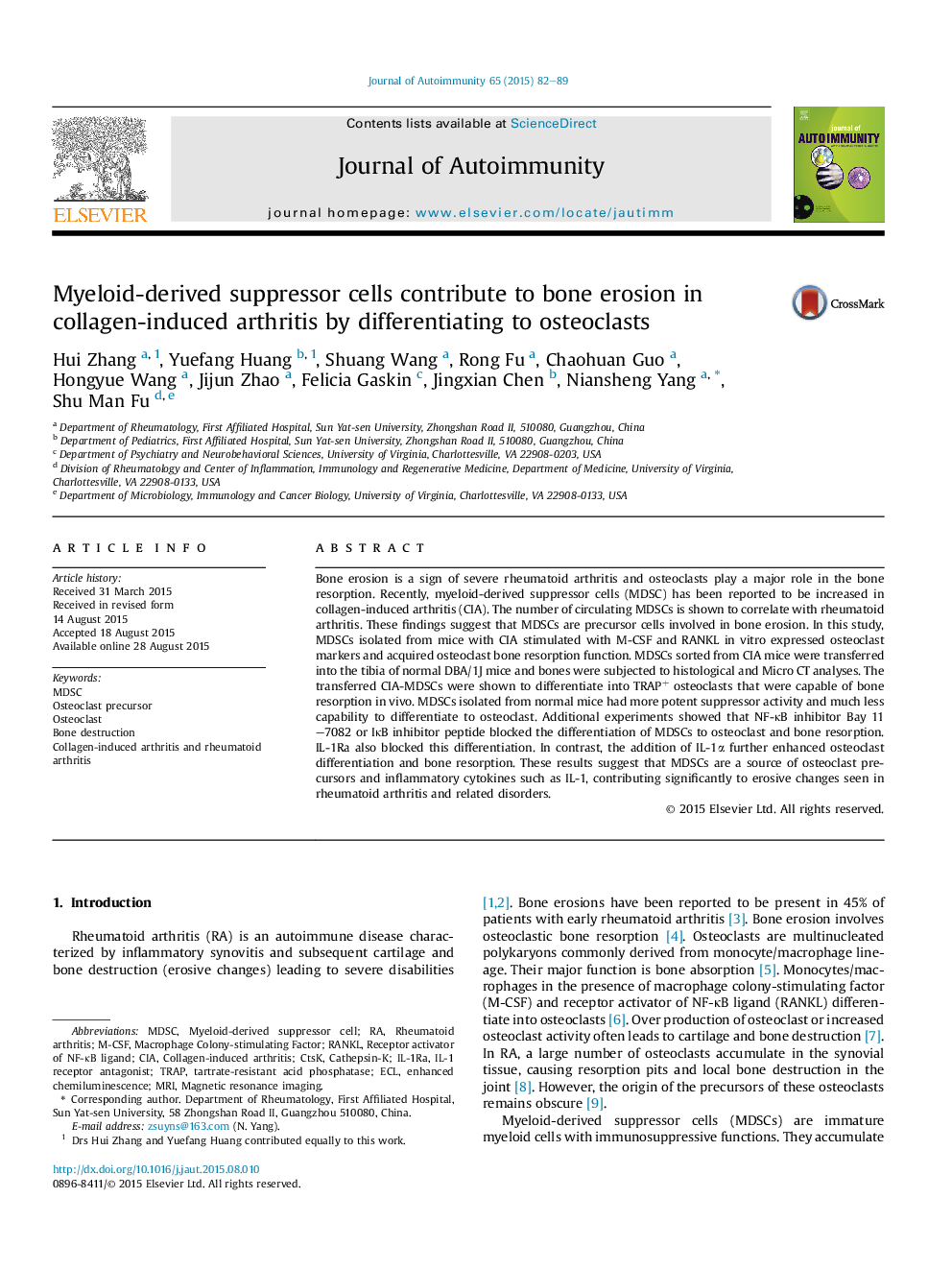| Article ID | Journal | Published Year | Pages | File Type |
|---|---|---|---|---|
| 3367701 | Journal of Autoimmunity | 2015 | 8 Pages |
•Myeloid-derived suppressor cells (MDSC) expand and in associate with bone destruction in collagen-induced arthritis.•MDSC can differentiate into functional osteoclast in vitro and in vivo.•MDSC differentiate into osteoclast depends on NF-κB and IL-1 signals.
Bone erosion is a sign of severe rheumatoid arthritis and osteoclasts play a major role in the bone resorption. Recently, myeloid-derived suppressor cells (MDSC) has been reported to be increased in collagen-induced arthritis (CIA). The number of circulating MDSCs is shown to correlate with rheumatoid arthritis. These findings suggest that MDSCs are precursor cells involved in bone erosion. In this study, MDSCs isolated from mice with CIA stimulated with M-CSF and RANKL in vitro expressed osteoclast markers and acquired osteoclast bone resorption function. MDSCs sorted from CIA mice were transferred into the tibia of normal DBA/1J mice and bones were subjected to histological and Micro CT analyses. The transferred CIA-MDSCs were shown to differentiate into TRAP+ osteoclasts that were capable of bone resorption in vivo. MDSCs isolated from normal mice had more potent suppressor activity and much less capability to differentiate to osteoclast. Additional experiments showed that NF-κB inhibitor Bay 11–7082 or IκB inhibitor peptide blocked the differentiation of MDSCs to osteoclast and bone resorption. IL-1Ra also blocked this differentiation. In contrast, the addition of IL-1α further enhanced osteoclast differentiation and bone resorption. These results suggest that MDSCs are a source of osteoclast precursors and inflammatory cytokines such as IL-1, contributing significantly to erosive changes seen in rheumatoid arthritis and related disorders.
